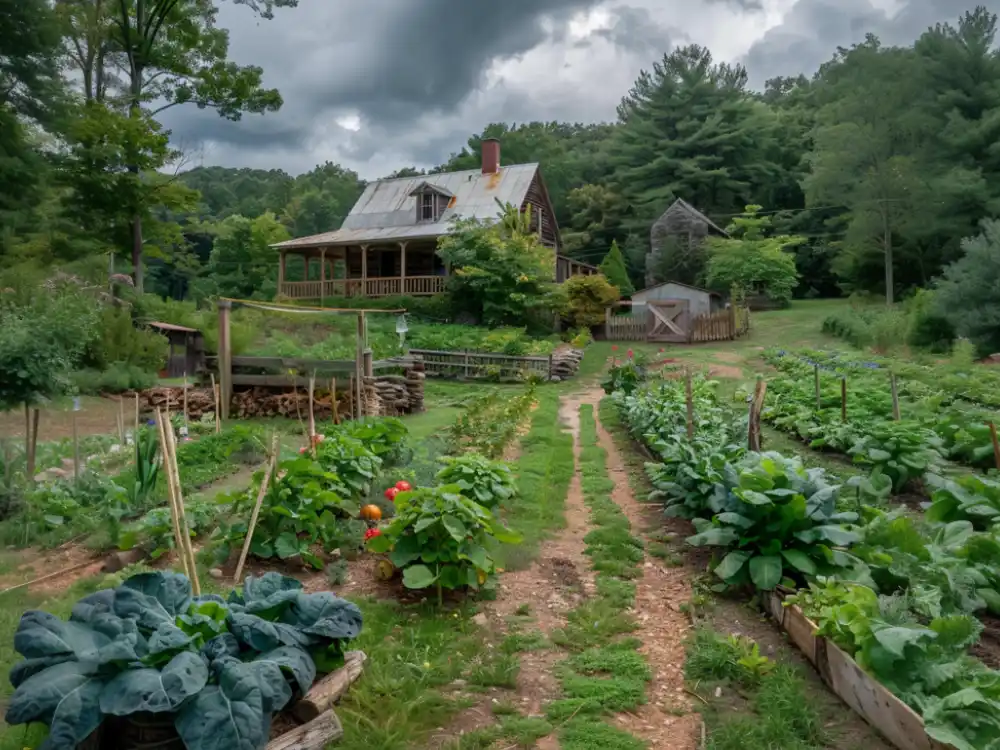When it comes to sustainable living and self-sufficiency, two terms that often come up are homesteading and farming. While they may seem similar, there are distinct differences between the two. In this article, we will explore the disparities between homesteading and farming, helping you understand their unique characteristics and benefits.
Homesteading
Homesteading is a lifestyle that focuses on self-sufficiency and living off the land. It is rooted in the idea of living simply and sustainably, often with a focus on organic practices and minimal reliance on external resources. Homesteaders typically aim to produce as much of their own food and resources as possible, reducing their dependency on commercial systems.
Homesteading involves various activities, such as growing vegetables, raising livestock, and preserving food through canning or drying. It also includes skills like carpentry, sewing, and natural medicine. Homesteaders often prioritize living off the grid, utilizing renewable energy sources like solar power and wind turbines.
One of the key aspects of homesteading is the emphasis on self-reliance and the ability to sustain oneself without relying heavily on outside sources. Homesteaders value the freedom that comes with being able to provide for their own needs and the satisfaction of living a simpler, more sustainable lifestyle.
No products found.
Farming
Farming, on the other hand, is primarily focused on the production of crops or livestock for commercial purposes. While some farmers may also practice sustainable methods, the main goal of farming is to generate income and provide food for a larger market.
Modern farming often involves large-scale operations, with specialized equipment and technology to maximize productivity. Farmers may cultivate vast fields of crops or raise livestock in concentrated animal feeding operations (CAFOs). The focus is on efficiency and profitability, often requiring the use of pesticides, herbicides, and synthetic fertilizers.
Farmers may also engage in crop rotation, irrigation, and other practices to optimize yields. They may sell their products to wholesalers, retailers, or directly to consumers through farmers’ markets or community-supported agriculture (CSA) programs.
The Key Differences
While both homesteading and farming involve agricultural practices, there are several key differences between the two:
- Scale: Homesteading is typically done on a smaller scale, focusing on self-sufficiency and meeting the needs of a single household. Farming, on the other hand, often involves larger operations aimed at commercial production.
- Purpose: Homesteading is driven by the desire for self-sufficiency and a simpler lifestyle. Farming, on the other hand, is primarily focused on generating income and providing food for a larger market.
- Methods: Homesteaders often prioritize organic and sustainable practices, while farmers may rely on conventional methods and technologies to maximize productivity.
- Dependency: Homesteaders aim to reduce their reliance on external systems, whereas farmers are often dependent on markets, wholesalers, and retailers to sell their products.
Choosing the Right Path
Deciding between homesteading and farming ultimately depends on your goals, resources, and lifestyle preferences. Homesteading offers a more self-reliant and sustainable approach, allowing you to have greater control over your food and resources. It requires a willingness to embrace a simpler lifestyle and develop a wide range of skills.
Farming, on the other hand, can be a viable option for those looking to generate income from agricultural activities. It often requires more significant investments in land, equipment, and infrastructure, as well as a thorough understanding of market demands and agricultural practices.
Both homesteading and farming have their unique benefits and challenges. It’s important to carefully consider your priorities and resources before embarking on either path. Regardless of which route you choose, both offer opportunities for a fulfilling and rewarding journey towards a more sustainable and self-sufficient lifestyle.

